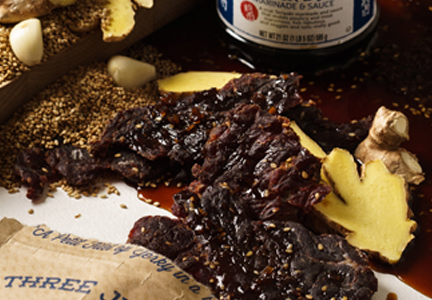NEW YORK – Consumer insights firm, The Nielsen Co., recently reported sales of meat snacks are reshaping the salty snack category while growth of chips and pretzels have been lackluster in the past year. With annual sales of over $7.2 billion, potato chips posted dollar growth of 1.7 percent and pretzels lost .5 percent last year while meat snacks showed compound annual sales growth of over 7 percent for each of the past four years.
Split into two segments —jerky and sticks — meat snacks as a whole represent a $2.8 billion category. Each segment contributes to about half of total sales. However, jerky had a strong recent year with sales growth at almost 7 percent while meat sticks were flat after ups and downs for the previous three years.
Potato chips still reign as the top-selling salty snack in overall sales with an annual household spend of $35.37; meat snacks come in a close second at $25.81. However, meat snacks’ household spend per trip, $7.42, almost doubles that of potato chips, at $3.61.
Nielsen’s Homescan shows Asian-American households as the demographic that spends the most money each year (an average of $31.61) on meat snacks. Asian-American shoppers are over 22 percent more likely to purchase meat snacks than the average shopper. Baby boomers are the biggest spending generation, spending $28.48 per year on meat snacks, making them 10 percent more likely than the average shopper to purchase.
Nielsen also reported shoppers utilizing the same three channels to purchase both traditional salty snacks and meat snacks. The biggest difference is 45.2 percent of consumers purchase traditional salty snacks at conventional grocery stores while only 23 percent purchase meat snacks at grocery stores. Almost 25 percent purchase meat snacks at supercenters, 20.4 percent purchase traditional salty snacks at supercenters, and 20.7 percent of shoppers buy meat snacks at warehouse clubs with only 12 percent buying traditional salty snacks at club stores.
BY BOB SIMS

